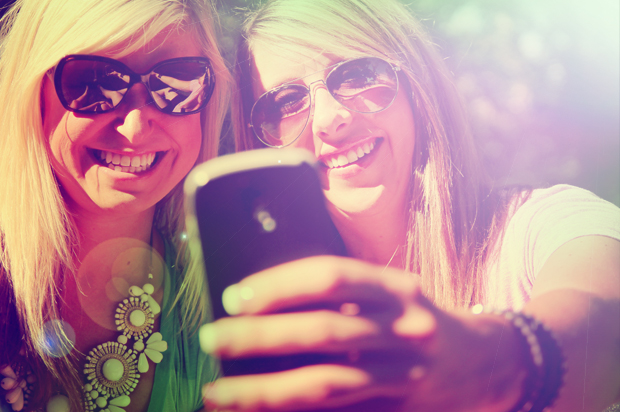I recently accepted Instagram as my favorite form of social media. There’s no messiness when it comes to limiting characters like Twitter, the photos don’t get lost in a stream of links and status updates like Facebook. Nope, just a nicely-edited and curated photo of what I happen to be up to at the moment, or throwing back with warm nostalgia. I sometimes skim through my photos (do other people do this, too?) and think about what a friend or stranger might pick up from my posts. It’s mostly pictures from concerts, the occasional pool party and puppies, and at this point in my life the images seem pretty representative of my day-to-day. At least they feel that way.
But for teens, Instagram offers the chance to lead a double (online) life. Elle recently examined a new trend among teens and middle school students who have created multiple online identities to mold.
“Finstagram,” or “fake Instagram” (“finsta” for short, naturally) are secondary accounts that people, typically young girls, create to post pictures and videos showcasing less savory moments of their lives. The images are typically funny or embarrassing ones that might not earn as many likes on their primary, “rinsta” (real Instagram), pages.
The accounts use nicknames and are almost always on private for only a very select group of friends to view and comment on. Like a sleepover when you see the perfect girls from school sans makeup and acting goofy, the “fake” accounts show the real girls.
In Elle, Justine Harman notes the inversion of the terms “real” and “fake” as regard the accounts, writing that “the nicknames help to disguise both the effort and emotion involved in putting any part of yourself online.”
And she’s right. Behind every carefree candid photo posted to Instagram lurks a few minutes worth of editing, filter experimentation and quick texts to most trusted friends for approval. In many ways the photos serve to establish and reinforce our identities, aligning perception with aesthetic presentation.
The behavior fosters competition among both friends and strangers, or at the very least motivates a person to want to keep up. Certain rules and codes exist when curating one’s own account depending on the desired image to be projected. Particular times of day, for example, tend to generate more likes than others, and posting too frequently can lead to diluting the impact of the images. We crave novelty.
The necessity for a “finsta” account suggests the need for a secondary outlet of expression, one arguably more “real” than a user’s primary account. For teens developing a personal sense of self, this trend suggests a dichotomy between not only real and virtual identities, but multiple online personas.
In some ways it encourages suppressing feelings that don’t quite match up with a primary Instagram account’s vibe and aesthetic. Feeling silly? Post it to the finsta lest you be seen looking goofy rather than coolly indifferent at a club.
Social media platforms like Instagram serve to broadcast our experiences to mass audiences, the mundane as much as the magnificent, with both presented through a highly-curated process of consideration. Instagram’s prominence has led teens to feel the need for accounts that are practically night-and-day opposites, where they share one facet of themselves they feel is more socially acceptable than others, and feeling like the less-perfect sides of your life have to be kept hidden has to have an affect on self-esteem.
Granted, everyone suppresses certain aspects of themselves online to a certain degree, but it seems like the division that separates “finstas” from “rinstas” will at some point become indistinguishable. What is “fake” anyway, if the photos are on some level more real representations of life? Part of the appeal of posting photos to platforms like Instagram is sharing the experience and being able to look back at the memory later on, and it’s discouraging that the meaning — if there’s any to begin with — might be lost or cast aside to an account designed to compartmentalize less-than-perfect expression. Maybe I’ll post a picture of myself making a pouty face later — nobody has to look perfect all the time.

